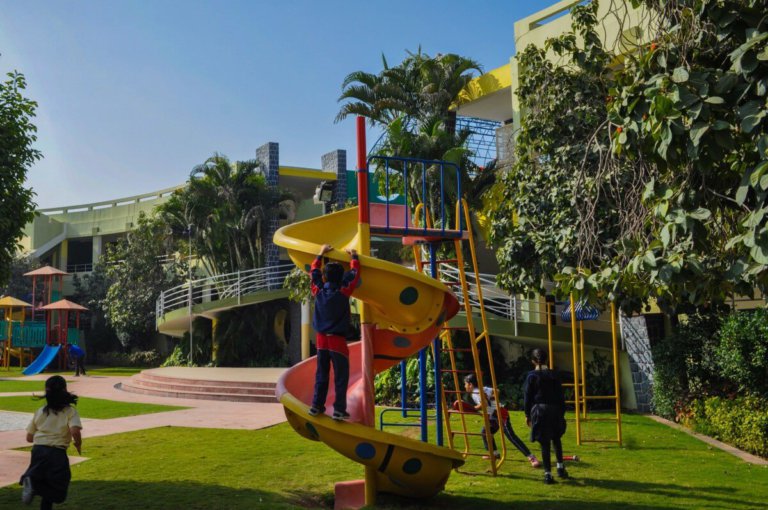
This year, Washington became the first US state to license outdoor preschools, promoting green schoolyards and jumping at the chance to build community connections outside the classroom.
Sharing her thoughts with the Washington State Department of Children, Youth and Families (DCYF), Debbie Groff, the DCYF Licensing Area Administrator explained that “By licensing outdoor preschool programs, we are expanding access to some really great educational opportunities for children while also giving families more options for child care in their communities.”
Offering a suite of benefits, outdoor learning and green educational spaces connect learners to nature, fresh air and an explorative pursuit of natural surroundings.

The academic value of green schoolyards. Source: Fuyong Hua/Unsplash
Supporting the bond between outdoor learning and educational progression, The Wildlife Trusts recently commissioned a study by the Institute of Education at University College London (UCL) to evaluate the impact nature has on children.
Focusing on over 450 primary school children, the study found that “Children’s wellbeing increased after they had spent time connecting with nature: the children showed an increase in their personal wellbeing and health over time, and they showed an increase in nature connection and demonstrated high levels of enjoyment.”
The Wildlife Trusts study also reveals that:
- 90 percent of children felt they learned something new about the natural world.
- 79 percent felt that their experience could help their school work.
- After their activities, 84 percent of children felt they were capable of doing new things when they tried.
- 79 percent of children reported feeling more confident in themselves.
By transcending learning practice from concrete-clad classrooms to lush, green open spaces, the barriers of education are broken and children’s inquiry skills and curiosity are unleashed.
Our new report shows spending time in nature can work wonders for a child’s wellbeing 🙇 This #OutdoorClassroomDay, we want to thank players of @PostcodeLottery for supporting tonnes of outdoor learning sessions throughout the UK 💚 Read the report here: https://t.co/JrNv7KM3gg pic.twitter.com/kzhuAcy6ZZ
— The Wildlife Trusts (@WildlifeTrusts) November 7, 2019
This could be why District Administration (DA) recently reported a new wave of projects that combine outdoor classrooms and green spaces in neighbourhoods that lack park access.
In the US state of Michigan, “Leaders at Grand Rapids Public Schools – working with city government and other agencies – are taking this concept of sharing to the next level…Officials are strategically enhancing school parks and playgrounds in parts of the city that lack sufficient green spaces,” notes the DA.
Hiring an environmental education coordinator to oversee the outdoor curriculum and ensure that the new green schoolyard succeeds, Grand Rapids Public Schools is building a positive culture and opening green spaces to communities that require a place to gather and to teachers who wish to conduct lessons outdoors.
These green spaces are also designed for public use when school is not in session, expanding community outreach to new levels.
Danielle Denk from The Trust for Public Land will discuss their vision: ‘Every child in underserved #urban #communities should have access to a green #schoolyard as a hub for climate resiliency; improved health and education and community empowerment.’ https://t.co/oG1kvazfXN pic.twitter.com/0cqpvRyq9T
— @Childinthecity (@Childinthecity1) November 4, 2019
If districts and schools across the world start to plant more green spaces and direct children through classroom doors and into stimulating outdoor learning environments, global communities may have a better chance at sharing educational passions and adhering to children’s academic aspirations.
Liked this? Then you’ll love…
These are some of the world’s greenest schools
How is this green school in Bali breaking down the walls of learning?







